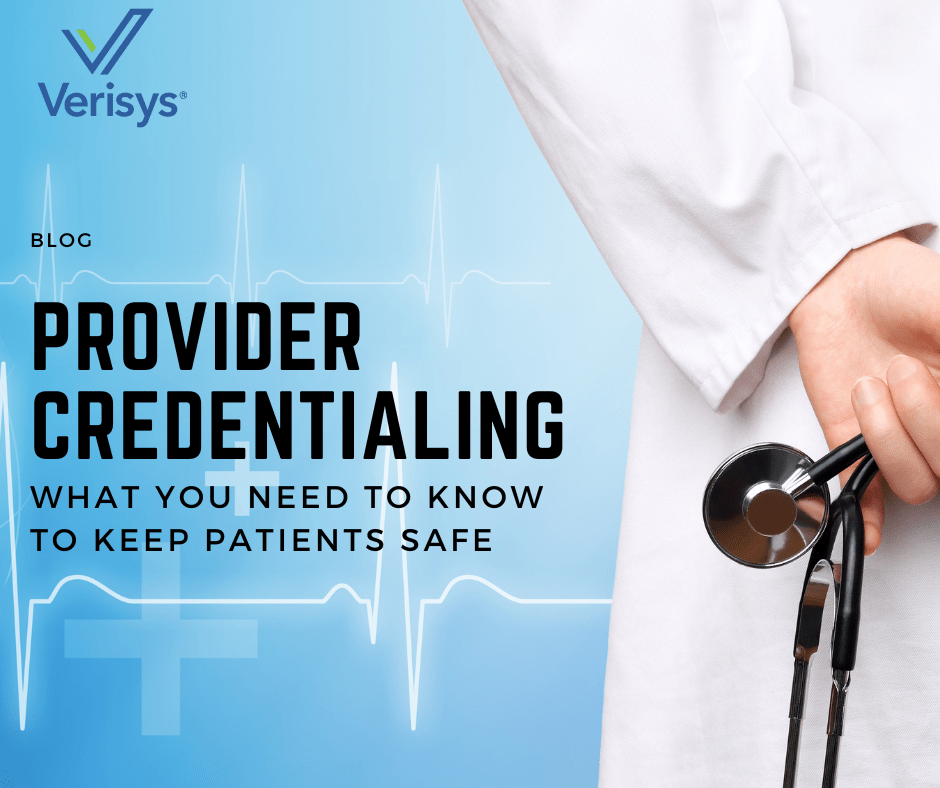– The best resource for monthly healthcare regulatory compliance updates. Compliance Updates: April 2024 Overlook: Licensure Compacts Other Legislation Board Updates Interstate Medical...


In May every year, thousands of graduating medical students across the United States recite the Hippocratic oath, pledging, “First, do no harm.” While it is hard to believe those graduating with a professional degree plan to intentionally harm future patients, unfortunately, it can happen.
Harm isn’t just in the form of medical errors but can also be associated with healthcare fraud. In both cases, the patient is the one that may suffer. Let’s look at these two types of harm in healthcare and what steps can help to prevent them.
In 2016, an article published by the British Medical Journal (BMJ) listed medical errors as the third cause of death in the United States. By definition, a medical error is an unintended act that doesn’t achieve its intended outcome due to an error in execution or planning.
The figure published in the 2016 article estimates that 250,000 deaths per annum were attributable to medical error. This made medical errors the third leading cause of death in 2016. However, there is some controversy around this estimate because of various medical error definitions and their measurement methodology.
Not all medical errors are caused by bad actors. However, preventing entry, quickly discovering and extracting bad actors is a valid place to start.
Intentionally causing patient harm is less of a motivation than a fraud scheme that results in personal gain. Either way, patients are often the collateral damage of these schemes.
Healthcare fraud and negligence is a significant threat to the sustainability of the healthcare system and the citizens it serves. Up to 10% of federal healthcare funding is lost to fraud, waste, and abuse.
The National Health Care Anti-Fraud Association (NHCAA) approximates that about 3% or $68 billion annually in healthcare spending is squandered through fraudulent activity. Notably, other government and enforcement task forces calculate the percentage closer to 10%, meaning more than $300 billion may be wasted annually.
The federal and individual state entitlement programs have implemented measures designed to protect patients while mitigating fraud, waste, and abuse through a regulatory framework.
Reimbursement from entitlement programs for healthcare services provided to beneficiaries is contingent on compliance with, and adherence to, the laws and requirements set forth by governing bodies. Those found to abuse this system face fines, civil monetary penalties, and possible imprisonment.
Another layer of guidance besides government regulation is the quality standards-setting organizations that issue certification and accreditation to healthcare delivery systems.
Standards-setting and enforcement organizations regularly monitor and audit for compliance. Examples of these organizations are:
Adherence to government requirements, quality standards, and best practice-based internal bylaws, rules, and regulations demonstrate the intent to deliver quality healthcare.
Enforcing compliance is the only path to full transparency. And transparency is the single path to risk mitigation, including:
Integrating a best-practices approach to the credentialing process builds a culture of excellence. This culture further creates a structure that systematically adheres to multiple layers of external requirements and standards as well as internal bylaws, rules, and regulations.
The two fundamental components of the best-practices approach are:
Having a stringent credentialing process that meets compliance requirements is designed to keep bad actors out of the healthcare delivery systems where they can harm patients and defraud payers.
Let Verisys Help You
Verisys is a credentialing verification organization that helps healthcare-focused organizations meet the fundamental components associated with credentialing and ongoing monitoring. We help you meet and exceed regulatory requirements and quality standards — ensuring a quality healthcare experience for all patients.
Fraud Abuse Control Information System, FACIS®, is Verisys’ proprietary database that provides primary source records for allied health and medical professionals regarding:
FACIS has over 400 million current and historical records dating back to 1992. All these records are accessed through a secure, aggregated search engine giving you various views such as longitudinal, current, and everything in between. Our data is continuously updated, which means yours is too.
Our advanced technology screens utilize proprietary matching algorithms. We check for nicknames, alternative spellings, and various formats of hyphenated last names. A single search inquiry through Verisys’ powerful data platform delivers real-time results with a 99.99% accuracy rate.
Using FACIS as your screening and continuous monitoring database is the core of provider credentialing and transparency. Verisys’ FACIS is the industry’s largest and most trusted dataset, with the highest accuracy rate of matching data to identities.
Let Verisys streamline your credentialing and ongoing compliance processes. Set up an appointment today to speak with one of our credentialing specialists.